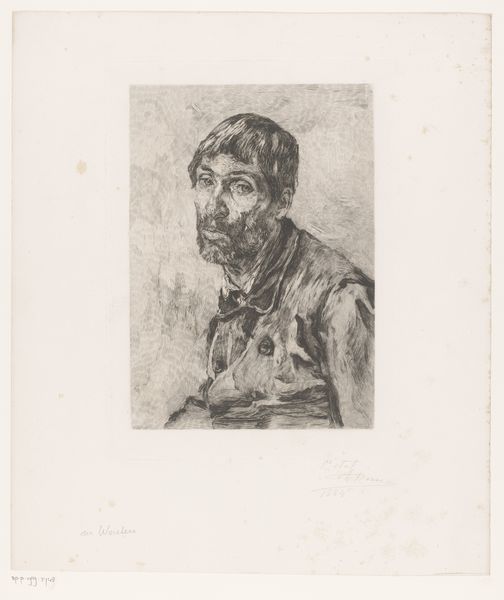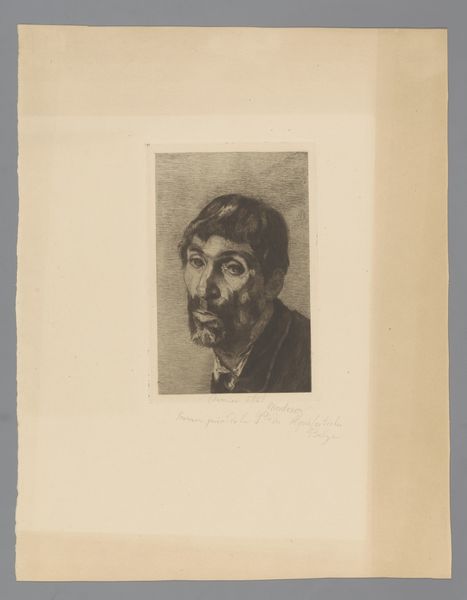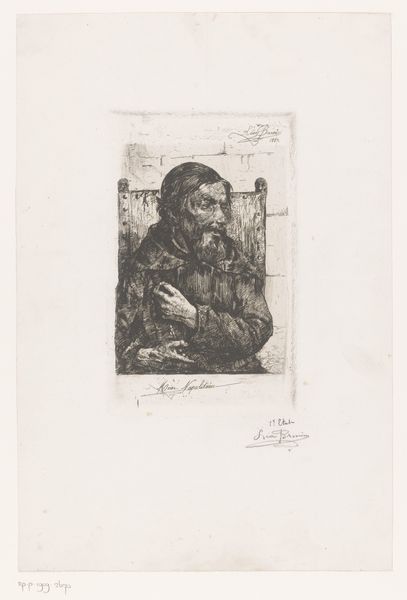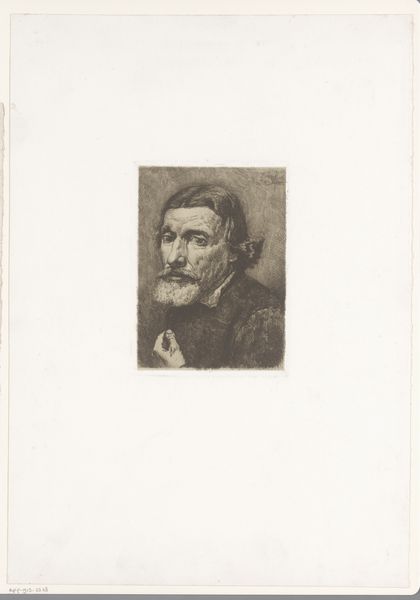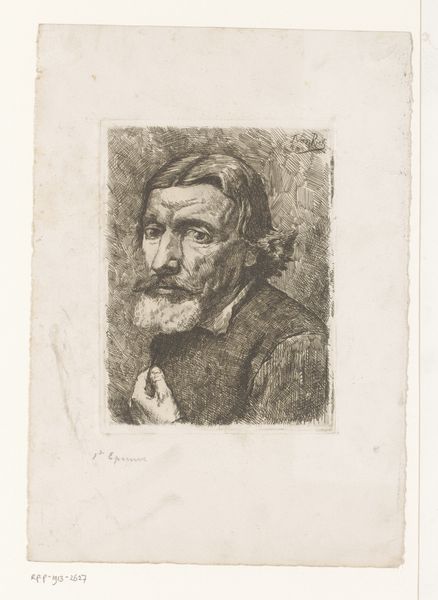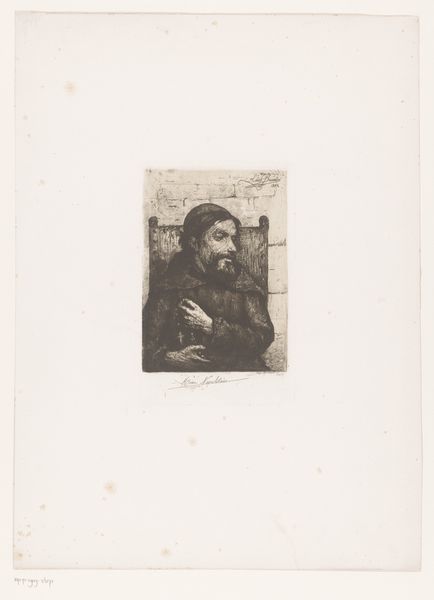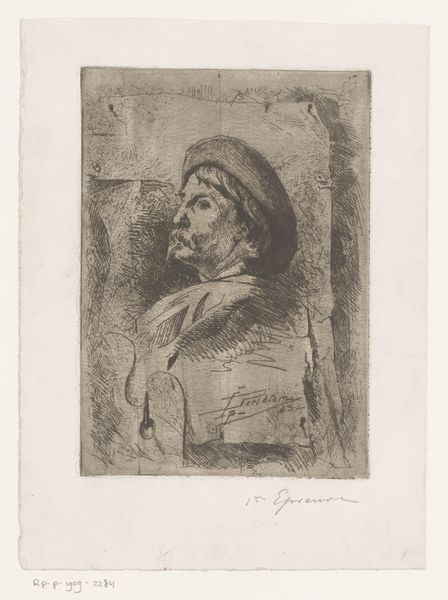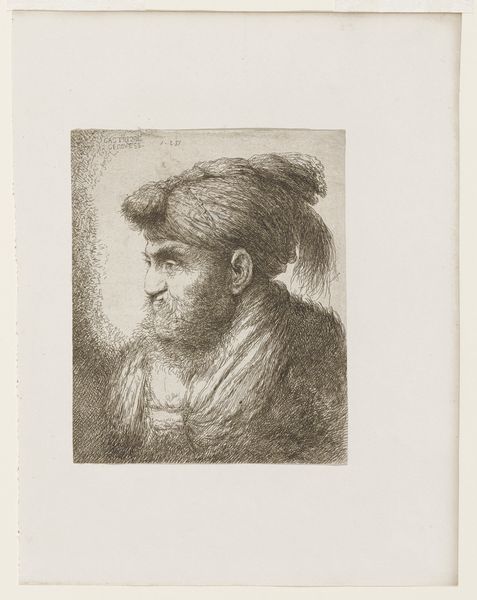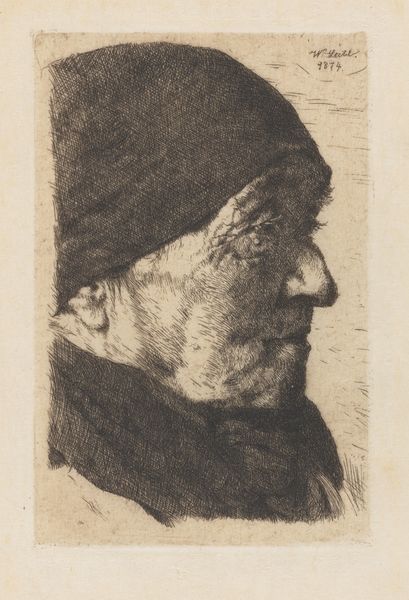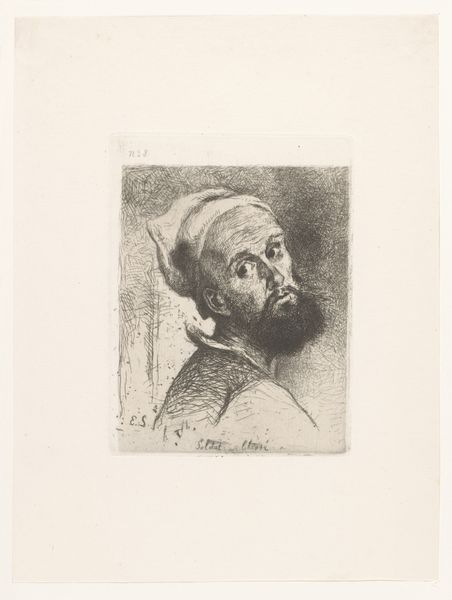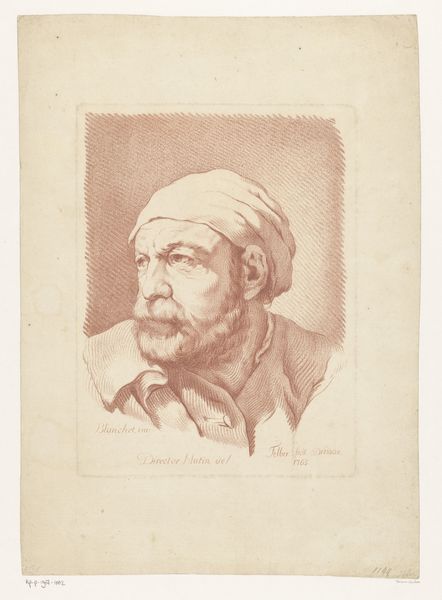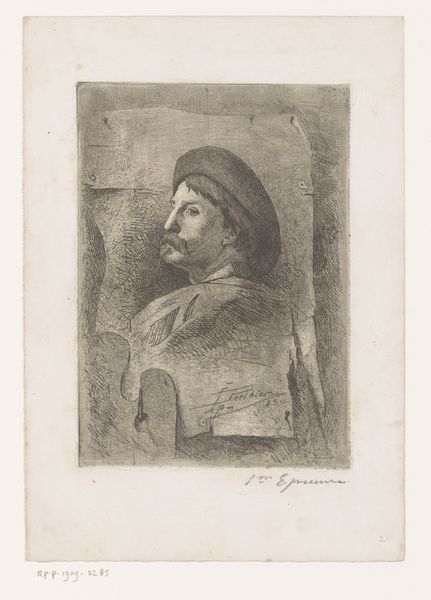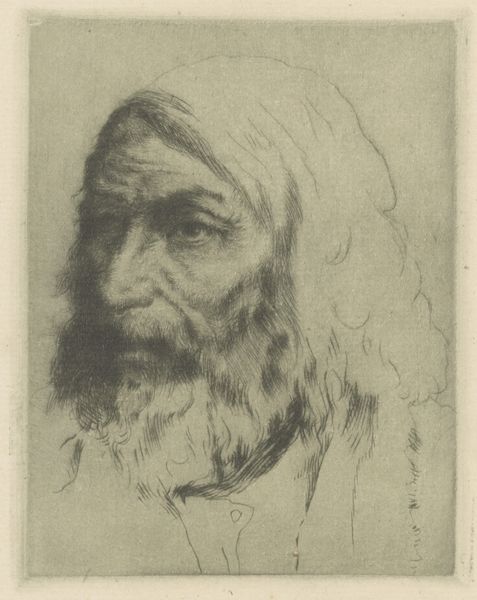
print, etching, charcoal, engraving
#
portrait
# print
#
etching
#
charcoal drawing
#
charcoal
#
history-painting
#
engraving
#
realism
Dimensions: height 320 mm, width 234 mm
Copyright: Rijks Museum: Open Domain
Editor: This is Auguste Danse's "Bedelaar," created in 1884. It's a charcoal etching, a portrait that evokes a feeling of hardship. What do you see in this piece? Curator: I see a stark portrayal of societal neglect. Consider the historical context: 1884 was a time of immense social upheaval. Danse's choice of medium – etching and charcoal – contributes to a raw, almost brutal honesty. It resists idealization. How does this portrayal challenge the comfortable narratives of the bourgeoisie at the time? Editor: It's certainly not the glamorous portraiture you'd expect. There's a directness to his gaze, a lack of embellishment... a statement, maybe? Curator: Precisely! This "Bedelaar," this beggar, confronts the viewer. He isn't some romanticized figure; he embodies the systemic failures of industrializing Europe. What does it mean to give artistic dignity and attention to a marginalized person in that era? Editor: It's an act of resistance, I suppose. To acknowledge the humanity of someone often ignored. Curator: Exactly! And further, who decides who is deemed worthy of representation in art history? It raises crucial questions about class, power, and visibility, issues still relevant today. Editor: That’s a great point. It's not just a portrait, it’s a social commentary. I see it in a completely different light now. Curator: Understanding that art is never created in a vacuum transforms our appreciation. By contextualizing the "Bedelaar," we gain a clearer understanding of its historical resonance and contemporary implications.
Comments
No comments
Be the first to comment and join the conversation on the ultimate creative platform.
